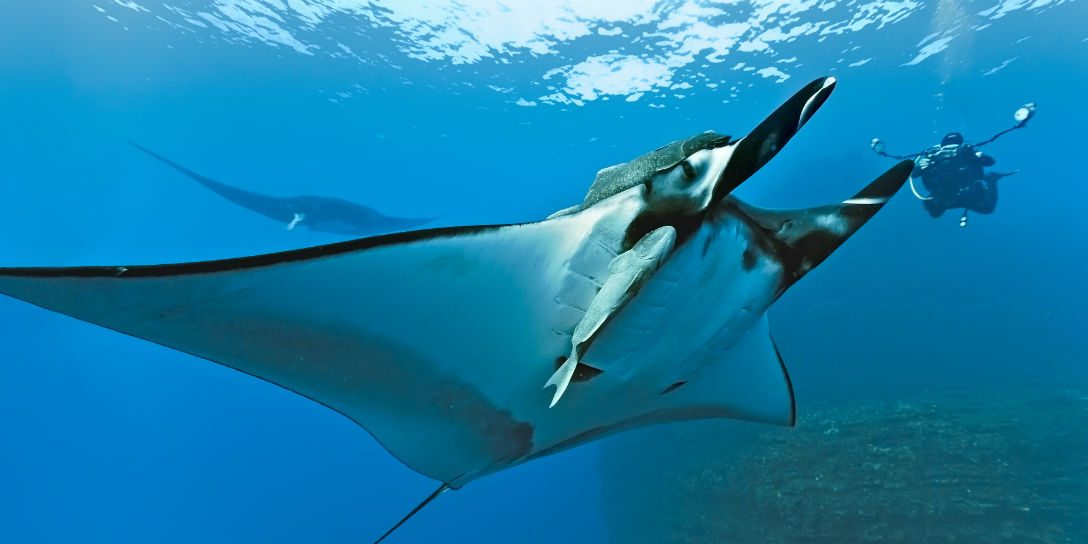Hunting Of The Manta Ray
Manta Rays are categorized in two species ,the reef manta which is the second largest ray in the world and the giant pacific manta ray which comes in first as the largest ray in the world. Both species can be found in the open ocean in warm tropical, subtropical and temperate waters around the world. They thrive upon zooplankton which they swallow in their open mouths as they swim using their gills to filter out the water. Manta’s are known in the water worlds as the gentle giants of the oceans.
Now, both species of manta are listed as “vulnerable” on the International Union for the Conservation of Nature list. Having a long gestation period of over a year makes reproduction a slow process that is not able to keep up with the steady death of the species. Manta rays are also slow to attain sexual maturity and have low birth rates, consequently populations are seriously threatened circumglobally. They appear on the list due to both incidental and direct threats of pollution, entanglement in fishing nets and direct harvesting for their gills. The greatest threat of the manta is the direct overfishing for their gill rakes, known as peng yu sai, to be used in Chinese medicine.
For traditional Chinese medicine, they form a vital ingredient in the development of remedies that supposedly reduce toxins and improve blood circulation, which stimulates the immune system function. Other believed properties of these gills are healing fertility problems, kidney problems, chickenpox and other common diseases. None of these medicinal claims are supported by science or found in any of the traditional Chinese medicine texts. Of all the 6,000 plus remedies listed in traditionals Chinese texts the name, peng yu sai, is not found. Many practitioners admit that they are not familiar or aware of a remedy that uses manta gill rakers and is not included in current curriculum.
Much like shark finning, most of the remains of the rays are gone to waste once the gill rakers have been extracted from the mantas. An unpleasant taste and texture does not make consumption of the meat and flesh a targeted market. Researchers believe the global market for gill rakers to be an estimated 61,000 kilograms a year, with an estimated value of $11.3 million. Interestingly, global tourism value of rays due to scuba diving and other water tours for the purpose of seeing mantas alive in their natural habitat is estimated at $100 million yearly. A great example of this is in Costa Rica where shops in the dive shops in Playa Flamingo are doing quite well taking tourists year round to visit the Giant Pacific Mantas of the Catalina Islands.
The sad truth of the situation is, however, with very little protection given to manta rays in coastal waters, rays will likely face regional extinctions because of unregulated fisheries.


